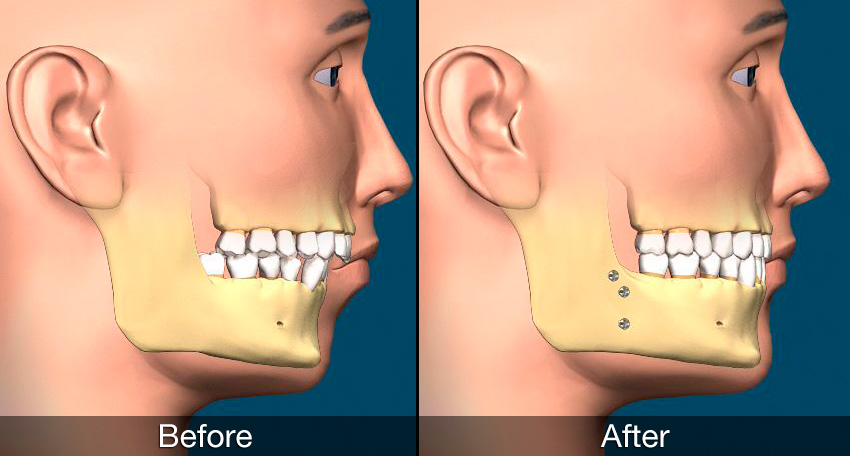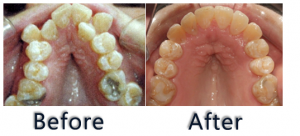Having a well-aligned jaw is not only important for aesthetic reasons, but also for proper oral function and overall health. However, some individuals may experience issues with a narrow jaw, which can lead to various problems such as difficulty chewing, breathing, and speaking. In such cases, jaw widening procedures can be considered to address these concerns.
Causes of Jaw Narrowing
There are several factors that can contribute to a narrow jaw. One common cause is genetics, as some individuals may inherit a narrow jaw structure from their parents. Other factors include improper jaw development during childhood, certain medical conditions, and even the natural aging process. Regardless of the cause, a narrow jaw can have a significant impact on a person’s quality of life.
Treatment Options
Fortunately, there are various treatment options available to widen the jaw and improve its alignment. One common approach is orthodontic treatment, which involves the use of braces or aligners to gradually shift the teeth and expand the jaw. Another option is maxillary expansion, a procedure that physically widens the upper jaw to create more space for the teeth. In some cases, surgical intervention may be necessary to achieve the desired results.
Results and Benefits
The results of jaw widening treatments can be remarkable. Not only do these procedures improve the appearance of the face and smile, but they also enhance oral function and overall well-being. By widening the jaw, individuals can experience easier breathing, improved speech clarity, and better chewing efficiency. Additionally, jaw widening can help prevent dental issues such as overcrowding and misalignment, reducing the need for future dental interventions.
What is Jaw Widening?
Causes of Jaw Widening
- Genetics: In some cases, jaw widening can be inherited from one or both parents. This means that if your parents have a wide jaw, you are more likely to develop the condition.
- Age: As we age, our bones tend to change shape and size. This can lead to jaw widening, especially in older adults.
- Temporomandibular Joint (TMJ) Disorder: TMJ disorder is a condition that affects the jaw joint and can cause pain, discomfort, and jaw misalignment. In some cases, it can also lead to jaw widening.
- Bruxism: Bruxism, or teeth grinding, can put excessive pressure on the jaw and cause it to widen over time.
- Medical Conditions: Certain medical conditions, such as acromegaly (a hormonal disorder) and gigantism (excessive growth), can cause jaw widening as a symptom.
Causes of Jaw Widening
1. Temporomandibular Joint (TMJ) Disorders
2. Dental Conditions
Dental conditions such as malocclusion (misalignment of the teeth), overcrowding, or missing teeth can also contribute to jaw widening. When the teeth are not properly aligned or there is a lack of space in the mouth, the jaw may widen to accommodate the teeth, resulting in a wider jaw appearance.
3. Hormonal Changes

4. Genetic Factors
Genetic factors can play a significant role in jaw widening. Some individuals may have inherited genes that predispose them to a wider jaw structure. These genetic factors can affect the size and shape of the jawbone, leading to a wider jaw appearance.
5. Medical Conditions

Certain medical conditions, such as acromegaly (a hormonal disorder), hyperparathyroidism (overactive parathyroid glands), or Paget’s disease (a bone disorder), can cause abnormal bone growth and lead to jaw widening.
6. Tumors and Cysts
In rare cases, tumors or cysts in the jawbone can cause jaw widening. These growths can put pressure on the surrounding tissues and bones, resulting in the expansion of the jaw.
Common Symptoms
1. Jaw pain:
Individuals with jaw widening may experience pain or discomfort in the jaw area. This pain can be constant or intermittent and may worsen with certain activities such as chewing or speaking.
2. Difficulty chewing:
Jaw widening can affect the alignment of the teeth, making it difficult to chew food properly. Individuals may experience difficulty biting and chewing, leading to discomfort and reduced ability to eat certain foods.
3. TMJ disorders:
Jaw widening can contribute to the development of temporomandibular joint (TMJ) disorders. TMJ disorders can cause pain, clicking or popping sounds, and limited movement of the jaw joint.
4. Facial asymmetry:
In some cases, jaw widening can result in facial asymmetry. The jaw may appear uneven or protrude on one side, causing aesthetic concerns for individuals.
5. Headaches:
Individuals with jaw widening may experience frequent headaches, particularly in the temples or around the jaw area. These headaches can be dull or throbbing and may worsen with jaw movement or stress.
6. Ear pain:
Jaw widening can cause referred pain to the ears. Individuals may experience earaches or a sensation of fullness in the ears due to the proximity of the jaw joint to the ear canal.
7. Speech difficulties:
In severe cases of jaw widening, individuals may experience speech difficulties. The misalignment of the jaw can affect the articulation of certain sounds, making speech unclear or difficult to understand.
8. Breathing problems:

In rare cases, jaw widening can lead to breathing problems. The misalignment of the jaw can affect the position of the tongue and airway, potentially causing snoring, sleep apnea, or difficulty breathing during sleep.
Diagnosis and Evaluation
Diagnosis and evaluation are crucial steps in determining the appropriate treatment for jaw widening. A thorough examination by a qualified healthcare professional is necessary to identify the underlying cause of the condition.
The diagnostic process typically begins with a comprehensive medical history review, including a discussion of the patient’s symptoms and any relevant family history. The healthcare professional will also conduct a physical examination of the jaw and surrounding areas to assess the extent of the widening.
In some cases, additional tests may be required to further evaluate the condition. These tests may include dental X-rays, CT scans, or MRI scans, which can provide detailed images of the jaw and help identify any structural abnormalities or underlying conditions.
Once a diagnosis is made, the healthcare professional will evaluate the severity of the jaw widening and its impact on the patient’s overall health and quality of life. This evaluation will help determine the most appropriate treatment options.
Overall, the diagnosis and evaluation phase is crucial in developing an individualized treatment plan that addresses the underlying cause of jaw widening and aims to improve the patient’s oral function and aesthetics.
Treatment Options
Non-Surgical Treatments:
1. Orthodontic Treatment: In some cases, orthodontic treatment can help correct jaw widening. This may involve the use of braces or other orthodontic appliances to realign the teeth and jaw.
2. Dental Restorations: Dental restorations, such as crowns or veneers, can be used to improve the appearance of the teeth and jaw. These restorations can help create a more balanced and harmonious facial profile.
3. Jaw Exercises: Certain jaw exercises can help strengthen the muscles around the jaw and improve its alignment. These exercises can be performed under the guidance of a physical therapist or a dentist.
Surgical Treatments:
2. Chin Augmentation: In some cases, chin augmentation may be performed to improve the overall facial profile. This procedure involves the use of implants or bone grafts to enhance the size and shape of the chin, creating a more proportionate and aesthetically pleasing appearance.
3. Genioplasty: Genioplasty is a surgical procedure specifically designed to address issues with the chin. It can be used to correct a receding or protruding chin, helping to improve the overall balance and harmony of the face.
Non-Surgical Treatments
Non-surgical treatments are often the first line of treatment for jaw widening. These treatments are less invasive and can help improve the appearance and function of the jaw without the need for surgery. Here are some common non-surgical treatment options:
Orthodontic Treatment
Orthodontic treatment is a common non-surgical option for jaw widening. It involves the use of braces or aligners to gradually move the teeth into the correct position. This can help correct any misalignment or malocclusion that may be contributing to the jaw widening.
Orthognathic Surgery
Chin Augmentation
Chin augmentation is a non-surgical treatment option that can help improve the appearance of the jaw. It involves the use of injectable fillers or implants to enhance the size and shape of the chin. This can help create a more balanced and harmonious facial profile.
Orthopedic Treatment
Orthopedic treatment is another non-surgical option for jaw widening. It involves the use of functional appliances, such as headgear or splints, to correct any skeletal abnormalities that may be causing the jaw widening. This treatment is often used in children and adolescents whose jaws are still developing.
Surgical Treatments
When non-surgical treatments fail to provide satisfactory results or when the jaw widening is severe, surgical interventions may be necessary. Surgical treatments aim to correct the underlying cause of the jaw widening and restore proper function and aesthetics.
Orthognathic Surgery
Recovery from orthognathic surgery can take several weeks, during which the patient may experience swelling, bruising, and discomfort. A liquid or soft food diet is usually recommended during the initial healing period. Pain medications and antibiotics may be prescribed to manage pain and prevent infection. Regular follow-up visits with the surgeon are necessary to monitor the healing process and make any necessary adjustments.
Genioplasty
During genioplasty, the surgeon makes an incision either inside the mouth or under the chin to access the chin bone. The bone is then cut and repositioned to achieve the desired shape and projection. The incision is closed with sutures, and a dressing or bandage is applied to protect the area. Recovery from genioplasty is typically faster than orthognathic surgery, with most patients able to resume normal activities within a week.
Recovery and Aftercare
In the case of surgical treatments such as jaw surgery or distraction osteogenesis, the recovery period is typically longer. Patients may need to stay in the hospital for a few days after the surgery and will require a longer period of rest and recovery at home. Pain medications will be prescribed to manage any post-operative pain.
It is also important to avoid any activities or habits that may put stress on the jaw during the recovery period. This includes avoiding hard or chewy foods, smoking, excessive talking, and strenuous physical activities. Following these guidelines will help ensure a successful recovery and improve the chances of achieving the desired results.
Overall, the recovery and aftercare process plays a crucial role in the success of jaw widening treatment. By following the instructions provided by the healthcare provider and taking proper care of the jaw, patients can expect a smoother recovery and achieve the desired results.
Expected Results and Prognosis
After undergoing jaw widening treatment, patients can expect to see significant improvements in their facial appearance and overall oral health. The specific results and prognosis will vary depending on the individual’s condition and the chosen treatment method.
In cases where jaw widening is performed to correct a misaligned bite or improve dental occlusion, patients can expect to experience better jaw function and reduced discomfort while chewing and speaking. This can greatly enhance their quality of life and overall well-being.
For individuals who undergo jaw widening for cosmetic purposes, the results can be transformative. The procedure can help achieve a more balanced and symmetrical facial appearance, enhancing the overall aesthetic appeal. This can boost self-confidence and improve social interactions.
It is crucial for patients to follow the recommended aftercare instructions provided by their healthcare provider to ensure proper healing and minimize the risk of complications. Regular follow-up appointments will also be necessary to monitor the progress and make any necessary adjustments.

Dr. Fidel Cann: Esteemed orthodontist with a lifelong dedication to enhancing smiles and oral health. Pioneering expertise, compassionate care.





